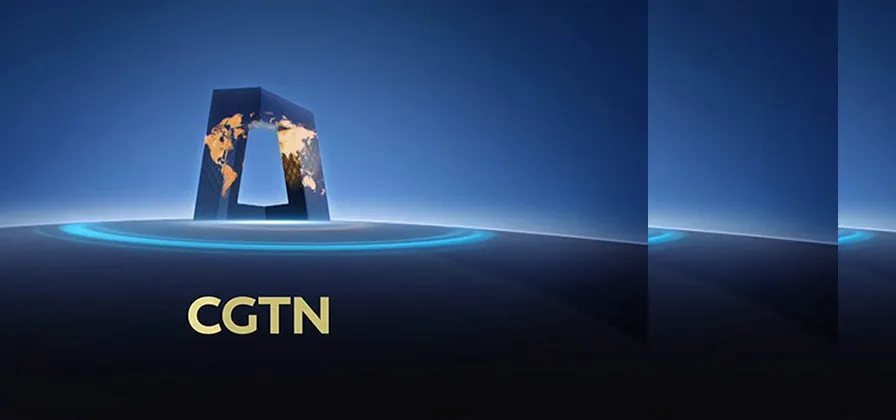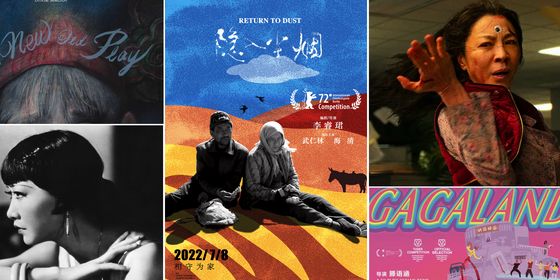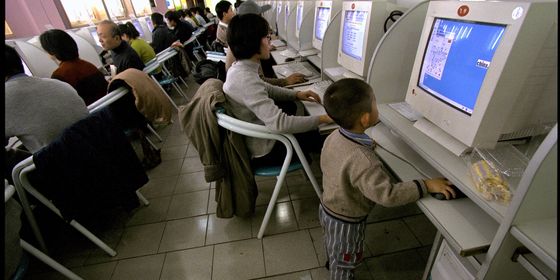The fraught politics of taking Chinese state media to the outside world
In the minefield that is China’s media environment in the post-Reform era, when the Party gave up “running” the nation’s media—without giving up “control” or clarifying what the latter entailed—every national event, every anniversary, national crises, and even something as mundane as the New Year can be a pretext for the Chinese leadership to wax political on the relationship of Party, media, and nation.
State media usually play a starring part in these pontifications; the media policies of president Hu Jintao (unveiled in 2008 for the 60th anniversary of the founding of People’s Daily, but also after the Wenchuan earthquakes) were outlined during a visit to the People’s Daily offices, whereas president Xi Jinping articulated his (memorably on the 2016 Lunar New Year) after a tour to study of conditions at People’s Daily, China Central Television, and Xinhua.
Jiang Zemin, of course, could top them both, having established basic terms of the Chinese leadership’s discourse of its media—“public opinion,” “supervision”—in the 1989 conferences in the wake of catastrophic events earlier that year, attributed to the “bourgeois ideological influence” of media liberalization and commercialization; in September, 1996, shortly before the plenary of the Central Committee, he further refined these concepts and gave examples of reportage he expected to see in state media at a speech made (where else?) during a tour of People’s Daily.
State media, in short, have the responsibility within China to assist the Party’s revolutionary mandate for guiding the development of Chinese society and to reflect what the Party identifies as the core values behind this mission. This legacy, however, is increasingly difficult to reconcile with the image that China now hopes to project abroad through state media.
When CCTV-News, the 24-hour English news section of the state television network, recently rebranded itself as China Global Television Network (quietly, by simply relaunching its website and changing logos on the very last day of 2016), it received an “electronic message” of congratulations from Xi Jinping whose content is as simple as its language is reserved: “maintain pride in your culture, maintain journalism ethics, be close to your audience,” it read. “Tell China’s story, broadcast China’s voice.”
Xi’s message more or less reiterates the same objectives that have existed for a decade in China’s soft power push, and its main theme appears to be to tell CGTN to keep up the good work doing the same thing it’s been doing—and so far the station appears not to have experienced any major upheavals apart from the name change.
A North American distributor for China Network Television, CCTV’s network division, whose role included developing web platforms for video clips from various CCTV channels including the old CCTV-News provided by CNTV, tells TWOC that so far no formal details of changes have been announced by their partner. “We can still use all of their old content, but we’ve personally noticed that there is far less video content from our partner [CNTV], and that on their own website they now have more picture-based and text-based content,” the distributor says; their own website, in fact, has not seen any new video content from their partners since the fall.
However, they believe that changes are imminent. “We can feel that they are trying to change direction. They seem to be consolidating video content [of CCTV-News] that used to be on the CNTV website to the new CGTN one, so we haven’t been getting anything new. It’s clear that that’s changing how the content [distribution] is administered, and from [which source].” CCTV told TWOC that they are currently not taking any questions about the name change and what, if any, other changes it would entail.
The official press release on CGTN.com announcing the name change gave no rationale behind the decision, but other media within China have interpreted the decision as a bid to increase China’s “discursive power” on the global stage. Swapping out the “Central” of the old name for the word “Global” in the same position indicates what Guan Media (link in Chinese), the Chinese media industry’s trade news portal, noted as an ambition to the ambition to take the “Chinese perspective” truly all over the world.
“Network,” meanwhile, connotes interactivity, what Guan Media describes as a multilateral exchange that allows the world to understand China, but also China to better understand the world (it also, undoubtedly, avoids unfortunate similarities between the old name and closed-circuit televisions). These are tentative first steps to strengthening “China’s ability to broadcast to the world,” previously hampered somewhat by an insufficiently eager “mentality for stepping out of the country’s doors.” Even the new studio of CGTN showcases an open layout and glass partitions, “the standard set-up of international news stations around the world.”
The question of how “Chinese” the international versions of Chinese state media ought to remain, and whether “Chinese-ness” in fact hinders the power China has in setting agendas and widely accepted knowledge pertaining to China (or anywhere else in the world for that matter), has long been a thorny issue in China’s push for soft power on the world stage through media internationalization.
It remains to be seen what steps, if any, CGTN plans to take concerning this question, and if its name change is indeed an articulation of a new concrete position in this issue as claimed by Guan Media. As noted by Joseph Nye himself, the crux of soft power is the disseminations of one country’s values in such a way that others can identify them as their own; however, the directive to “tell China’s story,” the push for state media to adhere to China’s “national developmental” priorities inside and outside China, and the occasional claims to offer “alternative” perspectives on world and Chinese events to the dominant neoliberal order are by definition in conflict a universalist orientation.
Two weeks into the name change, it appears so far that the solution for CGTN, as was with CCTV-News, is to offer plenty of content on inoffensive cultural happenings and relatively apolitical news such as technological and scientific achievements. The few details available of the rebrand combined with the still guarded, conservative, boilerplate messages from the Chinese leadership seem to indicate that the struggle to clarify state media’s mandate on the world’s stage has only begun.
Alternatively, another important criterion for soft power is whether a nation’s actions on the world’s stage is consistent (or at least seen as consistent) as the values it propagates. With China making good headway initiatives like the AIIB and some of the One Belt One Road projects, it could be that determining the exact, right way to mobilize Chinese media internationally will not be as overwrought as it once was.
Cover photo from maiqicn.com












